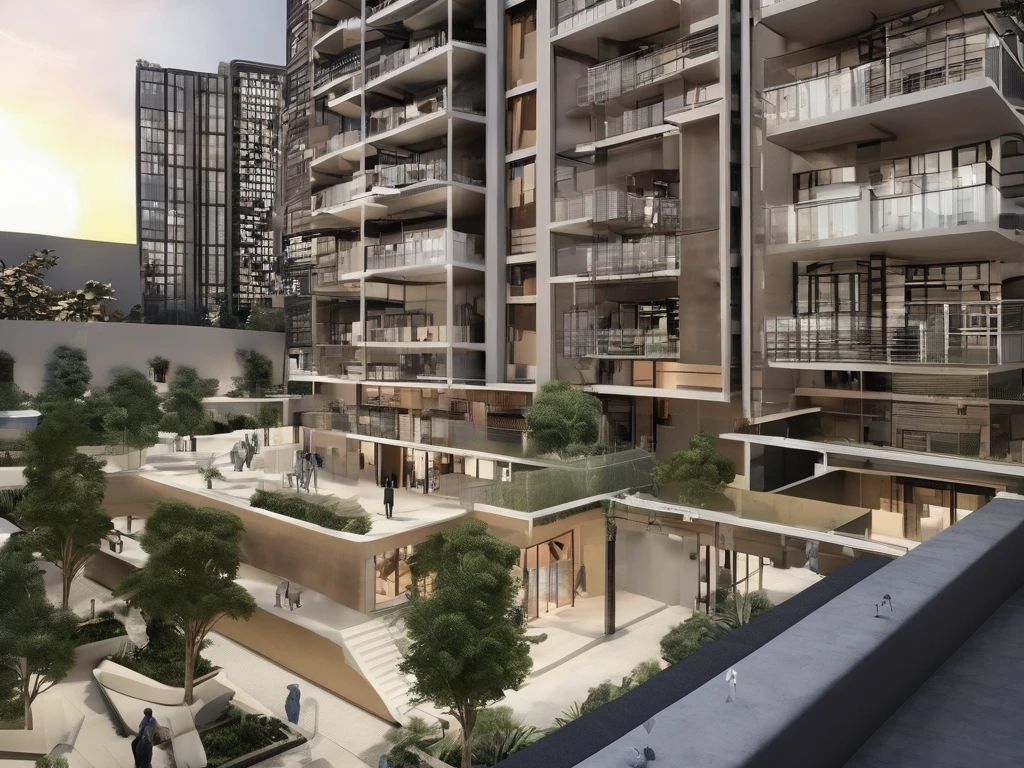As urbanization accelerates across Zimbabwe, it’s essential to think beyond traditional two-dimensional space (m²) and explore the potential of three-dimensional space (m³). This shift in perspective can unlock numerous opportunities for increased efficiency, sustainability, and innovative urban design. Here, we delve into the key implications of embracing three-dimensional space in urban planning and development, architecture, and technological integration.
Key Implications of Three-Dimensional Space
1. Increased Density and Efficiency
By maximizing the use of vertical space, urban areas can accommodate more residents and businesses without expanding outward. This increased density leads to enhanced efficiency in land use, making it possible to house more people while preserving green spaces and natural resources.
2. Enhanced Vertical Utilization
Vertical utilization allows for innovative solutions such as high-rise buildings that provide residential, commercial, and mixed-use spaces within a single structure. This multi-layered approach encourages a vibrant urban ecosystem, where people can live, work, and play in close proximity.
3. Multi-Layered Development
Three-dimensional space opens the door to multi-layered developments, such as combining residential units with commercial facilities and recreational areas. This not only promotes community engagement but also reduces the need for extensive commuting, thereby lowering traffic congestion and pollution.
4. Optimized Resource Allocation
With the integration of three-dimensional space, resources can be allocated more efficiently. This includes energy consumption, waste management, and water usage. The focus shifts towards sustainable practices that benefit both residents and the environment.
Urban Planning and Development Strategies
High-Rise Buildings and Skyscrapers
High-rise buildings are a hallmark of modern urban development, and Zimbabwe can benefit from adopting this model. By constructing skyscrapers, cities can enhance their skyline while maximizing the use of limited land.
Vertical Farming and Urban Agriculture
Incorporating vertical farming into urban designs promotes local food production, reduces transportation emissions, and ensures food security. By utilizing rooftops and multi-story structures for agriculture, cities can create sustainable food systems.
Multi-Level Transportation Systems
To accommodate the growing urban population, multi-level transportation systems, such as elevated walkways and underground railways, can help streamline traffic flow and reduce congestion. This efficient transit infrastructure is essential for modern urban living.
Layered Public Spaces and Amenities
Creating layered public spaces enhances community interaction and accessibility. Parks, recreational areas, and community centers can be designed in a multi-dimensional manner, allowing for a diverse range of activities and gatherings.
Architectural Innovations
Innovative Structural Systems
Embracing three-dimensional design encourages the development of innovative structural systems. This includes the use of new materials and construction techniques that support vertical expansion and enhance building performance.
Green Roofs and Walls
Green roofs and living walls not only improve air quality but also provide insulation and reduce energy costs. These sustainable design elements contribute to the overall aesthetic and environmental health of urban areas.
Atriums and Indoor Spaces
Incorporating atriums and open indoor spaces fosters natural light and ventilation, creating a more pleasant living environment. These spaces can serve as communal areas that promote social interaction among residents.
Adaptive Reuse of Existing Structures
Instead of demolishing old buildings, adaptive reuse can give them new life. Transforming existing structures into functional spaces for modern needs preserves cultural heritage while reducing waste.
Technological Integration in Urban Development
Building Information Modeling (BIM)
BIM technology enables more efficient planning and construction processes. By creating detailed 3D models, architects and builders can identify potential issues early, reducing costs and construction timelines.
3D Printing and Modular Construction
The use of 3D printing and modular construction techniques allows for rapid and efficient building processes. These innovations can significantly reduce construction waste and time, making it easier to implement sustainable practices.
Smart Building Technologies
Integrating smart technologies into buildings enhances energy efficiency and occupant comfort. From automated lighting systems to climate control, these technologies contribute to a more sustainable urban environment.
Vertical Transportation Systems
Elevators and escalators designed for high-rise buildings facilitate vertical movement, ensuring that residents and visitors can easily navigate multi-level developments.
Sustainability and Environmental Benefits
By embracing three-dimensional space, urban areas can promote sustainability and reduce their environmental impact. Efficient land use, vertical agriculture, and innovative architectural solutions all contribute to a greener future.
Conclusion
The shift from two-dimensional to three-dimensional thinking in urban planning and development is essential for Zimbabwe’s real estate market. By exploring innovative designs and technologies, cities can create vibrant, efficient, and sustainable living spaces that cater to the needs of a growing population. As we look to the future, embracing the potential of three-dimensional space will undoubtedly shape the urban landscape of Zimbabwe for generations to come.
For more insights on Zimbabwe’s real estate market and urban development trends, stay connected with us at property.co.zw.
 Continue with Facebook
Continue with Facebook
 Continue with Email
Continue with Email














